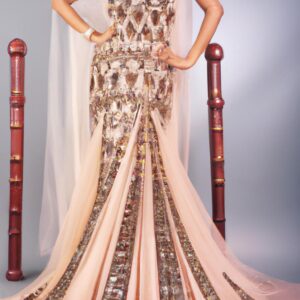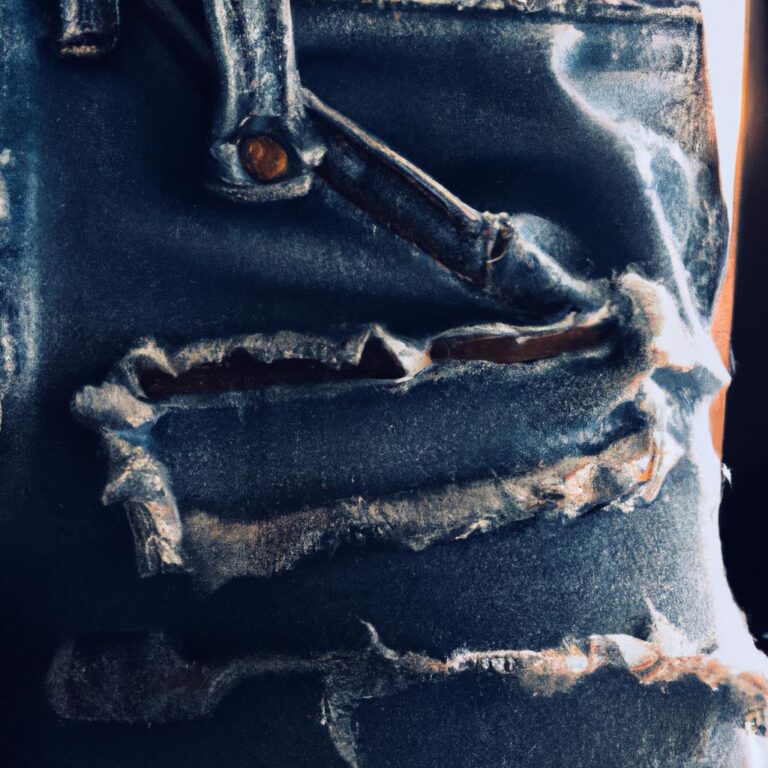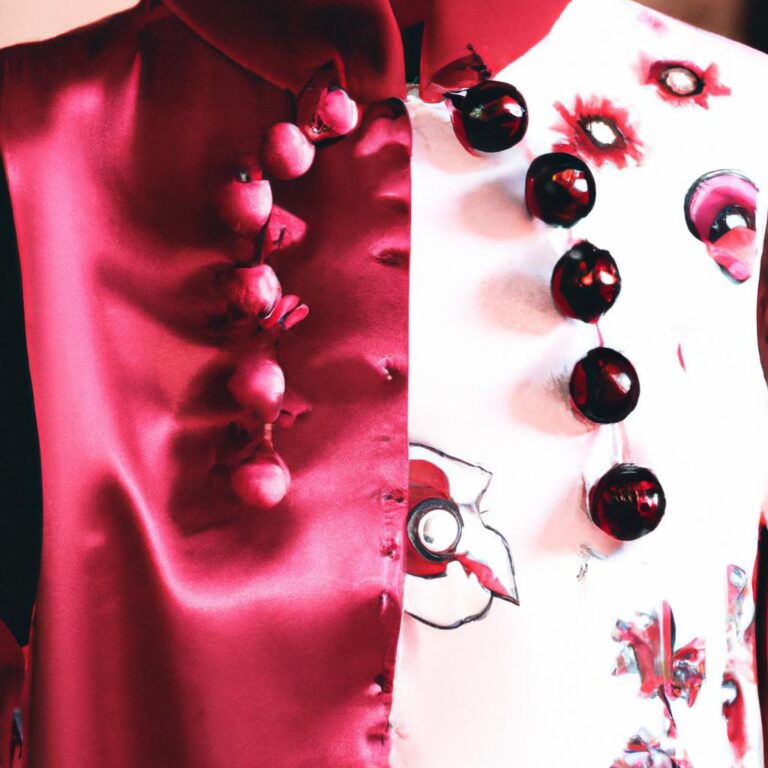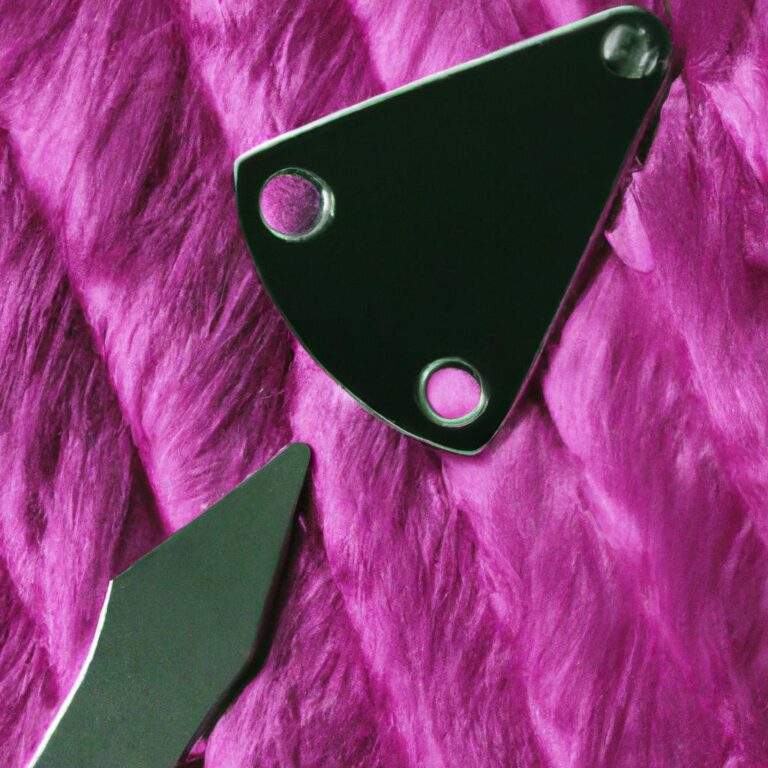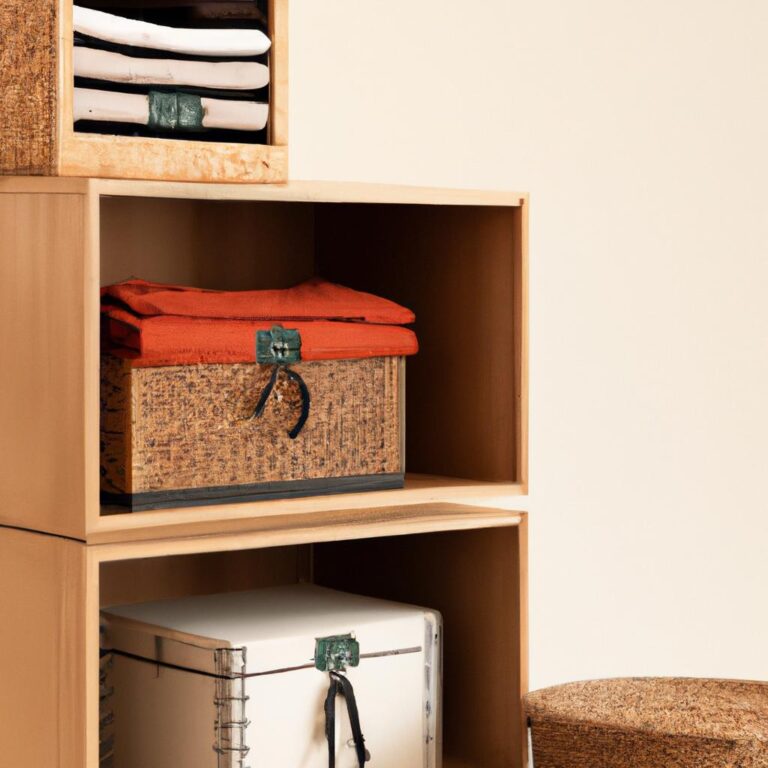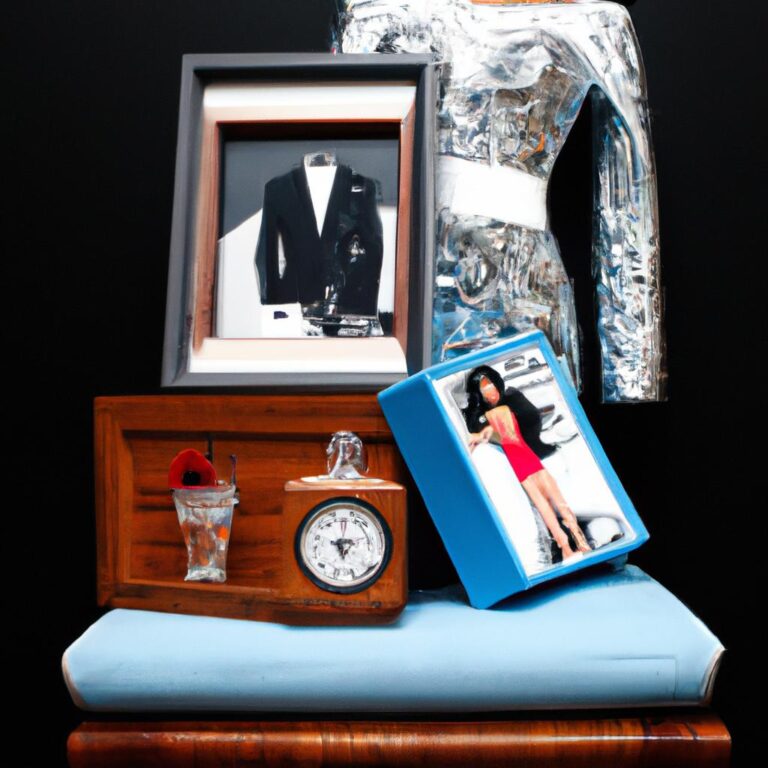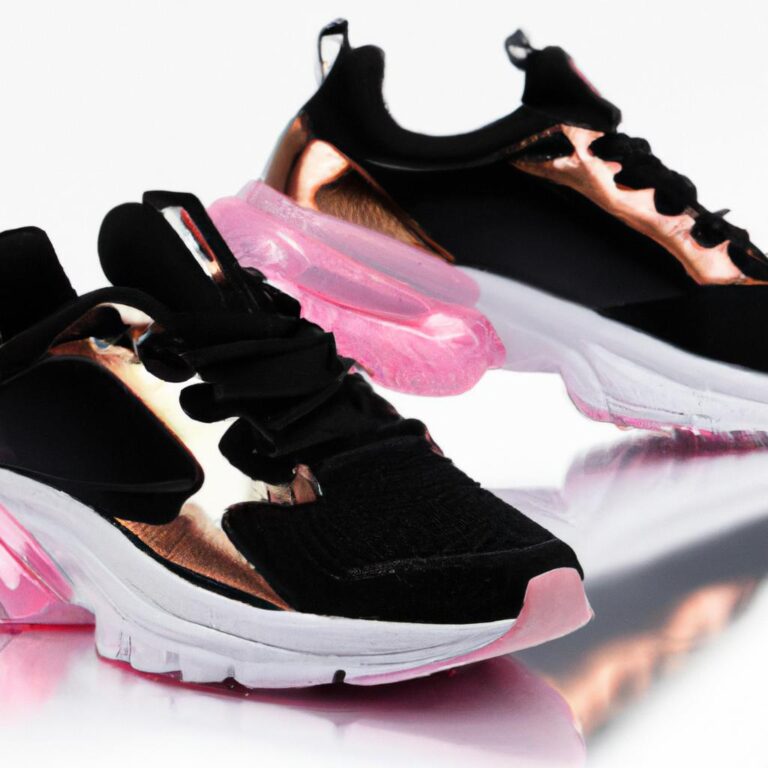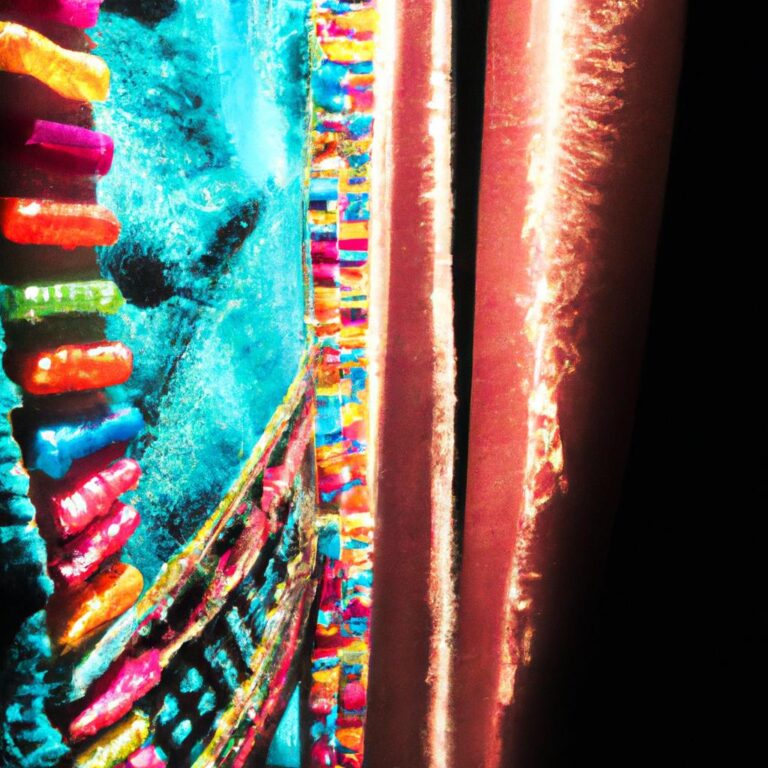
The Influence of Haute Couture: From Paris to the World
Haute couture is a French term meaning “high sewing” or “high fashion”. It is most often used to define the creation of exclusive custom-fitted clothing, made from high-quality fabrics and constructed with extreme attention to detail and finishing. This luxurious fashion style has been favored by the elite since its inception in 19th century Paris, France, and has since spread throughout the world, influencing fashion trends on every continent. Here, we will explore the history, rise, and modern impact of the haute couture industry.
What is Haute Couture?
Haute couture is a French term meaning “high sewing” or “high dressmaking”, and refers to the creations of elite fashion designers. It typically refers to bespoke or made-to-measure clothing for women, with intricate detailing and the highest quality materials used to create pieces that are truly unique and personalized per order. The design of the garments, as well as the materials and fabric used, make haute couture pieces one of a kind.
Although the term originated in France, haute couture has grown in popularity around the world in recent years, and is now seen as a symbol of luxury and societal status. As a result, many celebrities and influencers have embraced this trend, pushing it further into the global spotlight.
The Influence of Haute Couture: From Paris to the World
Haute couture is a high-end form of fashion that originated in Paris, France in the mid-19th century. It is a form of clothing that is designed by a designer and made exclusively for specific customers. The term haute couture comes from the French phrase, which literally means “high sewing” or “high-fashion”, and refers to the luxurious and expensive materials used to create the garments.
The influence of haute couture from Paris to the world has been undeniable. What began as a trend among Parisian aristocrats and wealthy elites quickly spread throughout Europe, and eventually across the globe. Today, haute couture can be seen on the catwalks of fashion shows and on the pages of magazines around the world. Celebrities, royals and high-profile figures partake in haute couture fashion, and its impact on global fashion is undeniable.
Early History of Haute Couture
Haute couture or ‘high fashion’ as it is better known, is the creation of exclusive custom-fitted clothing. The term ‘haute couture’ itself was first coined in Paris in 1868 by literary figure Charles Frederick Worth. It was he who for the first time created fashion houses and the concept of design collections that were presented each season.
The average person could not afford to purchase such specially crafted garments; hence haute couture was reserved for the elite. From the 16th century onwards, the courts of Europe had begun commissioning fashion designers from the most influential countries to create unique formal and evening wear. One of the most renowned figures, Rose Bertin, was a professional dressmaker to the French court in 1760-1780.
The development of the sewing machine in the 19th century changed the way fabric was cut and stitched, leading to great advances in how clothes were made. An emphasis on quality craftsmanship remained at the heart of haute couture. It was complemented with meticulous attention to design details, exquisite fabrics and precise fit. Over the decades, an array of illustrious names like Coco Chanel, Christiaan Dior, Jean Patou, Yves Saint Laurent and Giorgio Armani have become synonymous with haute couture.
Early History of Haute Couture
Haute couture is a type of fashion that originated in Paris, France in the nineteenth century. The term ‘haute couture’ was first used by English designer Charles Frederick Worth in 1858 when he declared himself as the ‘first couturier’. It is a French phrase meaning ‘high sewing’ or ‘high fashion’.
The earliest haute couture designers developed their craft during the industrial revolution when a wealthy middle class representing their wealth through fashion. Famous early pioneers include the House of Worth, founded by English designer Charles Frederick Worth. Other early influential designers included Cristóbal Balenciaga, Madeleine Vionnet, Jean Patou, Paul Poiret, Coco Chanel and Christian Dior.
Haute couture was heavily influenced by trends such as Art Deco, Neo-Classicism and Romanticism. This allowed for soft silhouettes and intricate beading and embroidery. These styles combined with the craftsmanship available made early haute couture unique and distinct.
Origin of the Term
The term ‘Haute Couture’, which translates to high fashion in English, was first coined by French writer Louis-Agassiz Fuarel in the late 19th century. At the time, it was used to describe exceptional designs created by Parisian couturiers. This included apparel made from luxurious fabrics, with intricate embroidery and beading.
As the trend began to catch on outside of France, so did the usage of the term. Designers from all over the world started to debut their own collections, showcasing elaborate garments for both men and women. The term became a popular way to refer to these exclusive designs, as a symbol of exquisite craftsmanship and skill.
Early History of Haute Couture
Haute Couture originated in France in the late 1700s. The term “haute couture” itself can be traced back to the 1860s, when Charles Frederick Worth became the first fashion designer to have customers directly purchase his clothing designs. Before Worth, designers would create unique styles and then sell these clothes to dressmakers, who would construct them for their customers. Worth created the concept of having his own clients, helping to coin the term “haute couture”.
Worth and his wife, Marie Vernet Worth, continued to develop his fashion house until the early 1900s. During this time, other famous fashion designers such as Coco Chanel, Christian Dior and Yves Saint Laurent began to emerge. Chanel was the first to offer ready-to-wear clothing for women along with her couture designs, developing the concept of luxury fashion that is still prominent today. Yves Saint Laurent was especially notable for his innovation and willingness to push the boundaries of style.
Rise of Haute Couture as a Global Trend
With its initial success and growing popularity, haute couture has become a global trend that can be seen all around the world. Although originating from Paris, its influence and impact have spread far beyond European borders. Specific countries have been drawn to and embraced the intricacy and uniqueness of haute couture.
India is one example, where the traditional Indian saree – a long strip of cloth usually made of silk or cotton – has been transformed by haute couture designs, creating a new trend for lavish, avant-garde sarees with intricate beadwork, sequins, and embroidery. Japan embraced the high-fashion look of haute couture and added their own unique twist with the term “High Street Fashion”. Celebrities and fashionistas in Africa have also taken up the trend, opting for more modern interpretations of traditional designs.
As a result, haute couture has had an enormous impact on the worldwide fashion industry. It has encouraged people to experiment with alternative and modern silhouettes, pushing the boundaries of style and design. Furthermore, it has also enabled designers to innovate different colors and textures, giving people more options to express their individual personalities through fashion.
Haute couture’s travels around the world have seen clothing styles develop, evolve, and mix together in ways not seen before. This is particularly visible in the United States, where designers such as Ralph Lauren and Tommy Hilfiger have blended European and American aesthetics to create their iconic haute couture looks.
The Spread of Haute Couture Beyond Europe
Haute couture first originated in Paris, but has since been embraced by the rest of the world. Starting in the 1920s, haute couture saw a rise in popularity and was no longer only seen as just a fashion trend originating from Paris, but instead started to gain traction across the globe.
In 1929, Christian Dior debuted his iconic ‘New Look’ collection in Paris – a shift from angular styles of the 20s to softer silhouettes of full-skirted dresses and coats. This ignited a flame within the fashion industry, inspiring influencers from all parts of the world to create their own unique collections.
Around the same time, British fashion house Hardy Amies was founded, with a vision to bring a touch of elegance to the everyday wardrobe. From the 1950s onwards, Japan’s leading fashion designers Kenzo Takada, Hanae Mori and Issey Miyake, began creating their own signature lines of haute couture – introducing a distinctive Eastern aesthetic. Today, many fashion houses have established themselves as global leaders in haute couture, with renowned designers such as Karl Lagerfeld, Vera Wang and Alexander McQueen.
What used to be a purely French invention, is now found in all corners of the earth. Its influence has spread from Paris to other countries around the world, becoming an essential part of the fashion industry and influencing trends beyond Europe.
Expansion to Other Countries
Since its start in Paris, Haute Couture has gained immense popularity. Originally, it was the domain of high society in Europe, but soon it had expanded across continents and boundaries. From Africa to Asia, from the USA to Australia, haute couture has become a staple in many countries.
One of the countries that has adopted the fashion most prominently is the United States of America. It was here that some of the most influential designers created their careers, presenting collections season after season, attracting the attention of the global fashion world. Designers such as Tom Ford, Marc Jacobs, and Vera Wang are just a few of these names who have propelled the art of luxury apparel to new heights in America.
The popularity of haute couture also reached China, where it has become a symbol of status and wealth. High-end stores located in the larger cities of China offer designer pieces from around the world. In addition, plenty of new designers from within China have also gained worldwide recognition; people like Guo Pei and Ma Ke have become household names in the Chinese market.
Finally, haute couture has reached the Middle East and Africa. Designers such as Elie Saab and Zuhair Murad have become celebrities in their own right due to their creations. Arab brides are now flocking to the region in order to purchase luxurious items for their wedding day. In Africa, it’s become the epitome of modern luxury, with African models becoming popular on the international fashion scene.
Today, haute couture is no longer limited to Europe. It’s become a global trend, recognized and respected by people all over the world.
Rise of Haute Couture as a Global Trend
The influence of haute couture has spread far beyond Paris, and today it can be seen everywhere from high-fashion runways to the red carpets of Hollywood. This rise in popularity has been due to a number of reasons including the increased access to global media, the wider availability of luxury fashion brands, and a greater understanding of the craftsmanship of couture.
In the past few decades, many high-end designers such as Karl Lagerfeld, Alexander McQueen and Oscar De La Renta have found immense success taking their designs around the globe. Fashion weeks in major cities such as New York, London, Milan and Paris have provided an avenue for these couturiers to display their work to the world, thereby increasing the reach of haute couture.
The globalization of haute couture has also been accelerated by the proliferation of digital media. The age of the internet has brought with it a vast array of information on fashion trends, making it easy for people to find out what is the latest in high-end couture across the world. This has allowed brands like Gucci and Dior to reach audiences beyond their local markets and increase their global recognition.
The expanding reach of haute couture has had a strong impact on the fashion industry around the world. Trends are no longer solely created in Europe but instead can be sourced from all corners of the globe. This unrestricted access to couture has allowed people to experience a broader range of fashion, giving them the opportunity to express themselves through the clothing they wear.
Modern Day Examples and Celebrities
Haute couture fashion is having a resurgence in the modern day, as more and more people are starting to recognize and appreciate its quality and craftsmanship. Runways around the world showcase a plethora of haute couture garments, ranging from intricate gowns to statement jackets. Some of the top names in the fashion industry, such as Christian Dior, Gucci, and Valentino, are known for their exquisite haute couture pieces.
Celebrities from all walks of life have been spotted sporting haute couture designs. From red carpets to magazine covers, the likes of Kim Kardashian West, Beyonce, and Rihanna have been seen wearing beautiful creations from designers like Zuhair Murad and Versace. Other celebrities, such as Cardi B and Lady Gaga, have made waves on the red carpet by donning bold, eye-catching haute couture looks.
In recent years, haute couture has become an important part of our cultural landscape, with high-profile figures like movie stars, musicians, and social media influencers flaunting their carefully crafted looks. From being featured in popular magazines to gracing the front rows of Fashion Weeks, it’s clear that haute couture is here to stay.
Runway Trends
Haute couture has seen an uptick in popularity over the past few years, and that is very apparent in the way fashion designers have been bringing their designs to the runway. Designers have created stunning new looks, usually consisting of multiple pieces to create a full ensemble. From the cool and structured lines of Balmain to the feminine florals of Dior, every look on the runway tells its own story.
The rise of haute couture on the runway has created a buzz around the world and opened up new possibilities for fashion as we know it. Designers have been pushing boundaries with their collections, creating unique and innovative looks that have had a lasting impact on consumer behavior.
Celebrity Wearing Haute Couture
Haute couture has become a staple in the closets of many celebrities over the years. From the classic Hollywood icons like Audrey Hepburn and Marilyn Monroe to more modern stars like Rihanna and Victoria Beckham, haute couture has been seen everywhere from the Red Carpet to the front pages of magazines. The iconic designs and trendsetting styles often worn during award shows and special events have made celebrities look their best in front of the world.
The ability of haute couture to make a statement on the red carpet is unparalleled. Fashion-house designers who regularly work with celebrities use haute couture to create memorable looks for their clients. In many cases, celebrities will often be seen wearing those same looks multiple times, showing their appreciation and love for the artistry of the piece.
Haute couture, whether it’s an intricate gown or a timeless tuxedo, continues to play a major role in the fashion industry today. With its unique combination of craftsmanship, detail, and timeless style, it’s easy to see why celebrities turn to haute couture for their most important events.
Impact of Haute Couture on Consumer Behavior
Haute Couture designs have become a symbol of luxury and exclusivity, making the field an attractive industry for those looking to invest in a unique wardrobe that stands out from the crowd. From the emergence of larger-than-life runway trends to the exclusive craftsmanship found within each piece, Haute Couture has created a divide between trend-followers and luxury buyers.
While followers of current fashion trends often opt for timeless classics over loud statements, luxury buyers are more likely to take a chance and buy pieces from Haute Couture Fashion Weeks, where iconic designers showcase their collections. These designs carry a sense of innovation and lasting design appeal, often making them the must-have pieces of the season.
When it comes to the pricing of Haute Couture, the cost of production is often cause for concern as garments are made with the highest quality materials and intricate detailing, meaning they often come with a hefty price tag. The demand for these exclusive items is greater than ever despite the higher price tag, indicating Haute Couture’s influence on the market.
Differentiation between Trend Followers and Luxury Buyers
When looking at the influence of haute couture, it is important to consider the difference between trend followers and luxury buyers. Trend followers look for fast fashion from affordability high street and online stores, often buying items with the intention of wearing them only a few times. Luxury buyers search for unique pieces crafted from the most expensive materials and designed with precision and attention to detail. Haute couture is meant for this group, as it offers exceptional quality and designs that almost never go out of style.
These shoppers focus on investing in lasting pieces that they can wear on several occasions. They expect refinement, innovation and quality workmanship that is not found in other forms of fashion. In addition, they are willing to pay a premium for these features and feel confident that their purchases will be worth the expense. Haute couture is designed to appeal to this specific market, providing them with creations from the world’s most esteemed designers.
Innovative and Lasting Designs
Haute couture designs are renowned for their innovative and timeless fashions. Designers strive to create garments that are unique and showcase their brand’s vision while still staying true to the trends of the season. They mix classic fabrics and materials with modern takes on styling, color and texture to create pieces that are distinctly original. Often these pieces can be found in museums, with their longevity and cultural significance standing the test of time.
Designers continue to push boundaries and experiment with exceptional materials to create pieces that are daring and bold. With no limits on what they can create, these exclusive designs are able to set trends and stand out from the rest. Haute couture fashion is carefully crafted with attention paid to every detail, creating perfect fits that flatter the wearer’s individual figure. The emphasis on quality and craftsmanship gives these pieces a luxurious feel that is both eye-catching and exquisite.
Pricing of Haute Couture
Haute couture isn’t designed for mass production, but more so for extravagance and exclusivity. The prices associated with haute couture garments can reach into the tens of thousands due to its exquisite detail in craftsmanship. The production of one garment can take up to hundreds of hours of work by a skilled team of artisans, resulting in a one-of-a-kind piece tailored just for the desired customer.
In comparison to more accessible ready-to-wear fashion, haute couture has a much higher price tag. Generally speaking, the couture customer is looking for something that stands out from the traditional trends and wants to invest in an item that will be timelessly elegant. As opposed to shoppers who are more interested in fast fashion, which is typically less expensive, and of lower quality.
The cost of couture reflects the quality, detail, and rarity of the item. As such, it carries a certain level of prestige with it. While less expensive fashion may come and go according to styles and trends, the power and presence of couture stands as a reminder of the importance of craftsmanship and beauty.
Conclusion
Haute couture is an enduring and evolving art form, where innovation and uniqueness have been the benchmark of success. As the trend continues to spread around the world, its influence on consumer behaviour has become clear. It encourages luxury buyers to think beyond trends, shifting their focus to standout pieces, as well as creating high demands and prices for unique designs.
This guide has demonstrated the lasting impact haute couture has had from Paris to the world, with its history and stories of famous designers and their impact on global fashion. From runway trends to celebrities who wear haute couture, it proves that its influence is here to stay.
We hope this guide has inspired you to explore more of haute couture, to appreciate the skill and craftsmanship that goes in to creating these timeless pieces.
The Influence of Haute Couture: From Paris to the World
Haute couture is a French term used to describe the highest quality of custom-fitted clothing. It is a craftsmanship that involves cutting and Draping fabrics by hand, creating an intricate attention to detail. This style has been influential in the fashion industry since its beginnings in the mid-1800s, when Paris became a hub for creative designers. As time passed, this exclusive fashion movement expanded beyond the city of its origin and began to influence the rest of the world.
Exploring Haute Couture
Haute couture has become an iconic force in the world of fashion, influencing culture and trends from Paris to the world. With its roots stretching back centuries, there are a variety of designs, styles and celebrities in modern day haute couture that all have stories to tell. To help explore this fascinating fashion, we have put together this easy to read guide.
From early history to its ongoing influence on consumer behavior, this guide offers an overview of what makes haute couture special. We invite you to learn more about this luxurious and timeless fashion style. Discover why haute couture has retained its relevance for decades and how it stands apart from other fashion styles.
In the meantime, here’s some tips to get started:
- Explore the origin of the term ‘haute couture’ and its history.
- Research the designers who have helped shape haute couture.
- Look out for modern day examples of haute couture on the runway and celebrities wearing it.
- Understand the impact of haute couture on consumer behavior.
Whether you’re a novice or a fashionista, this guide hopes to give you the knowledge and appreciation of haute couture. Take a deeper dive into the world of haute couture to appreciate the timelessness of this luxurious fashion style.
comments: 0
